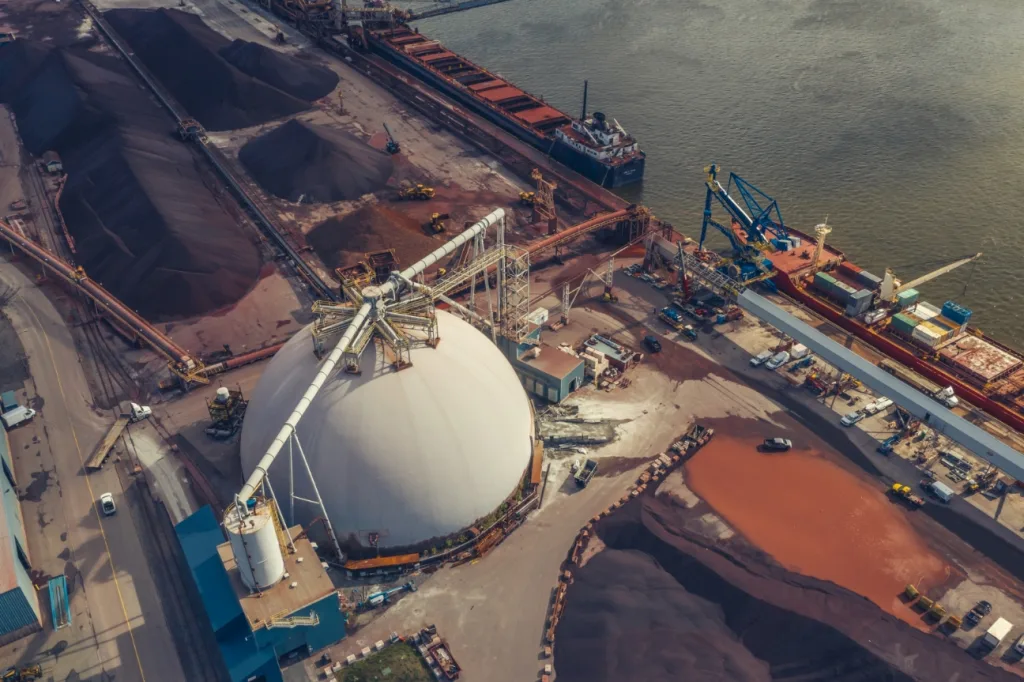
St-Lawrence Cement and Tercim are renowned for their expertise and know-how in the commercialization, manufacturing, and delivery of cement and supplementary cementitious materials (SCMs). Thanks to a manufacturing plant in Joliette (Quebec) and a network of terminals located in Quebec, Newfoundland, and the northeastern United States, we’re able to offer an extensive line of cements that meet and exceed CSA (Canadian Standards Association) and ASTM (American Society for Testing and Materials) standards.

We produce a wide range of cements for residential and commercial construction projects, engineering structures, structures in harsh environments, mining operations, prefabricated projects, etc.

We can produce custom mixes thanks to our two cutting-edge mixing plants in Quebec City and Longueuil.

The processes and components we use to produce our cements reduce CO2 emissions.

When it purchased the Joliette cement plant in 2024, Béton Provincial relaunched St-Lawrence Cement, a name widely respected by consumers both in Canada and the northeastern United States
Thanks to its 4 kilns, our plant can produce any type of cement while meeting the highest quality standards.

To reduce our environmental impact, about 40% of fossil fuels have been replaced with alternative fuels that were originally destined for landfills. Moreover, every cement we produce contains limestone, which helps to decrease CO2 output.

In addition to its shipping terminal in Joliette, St-Lawrence Cement relies on a network of 6 terminals located in Quebec (Longueuil, Lasalle), Newfoundland (Argentia, Long Pond, Corner Brook), and the United States (Solvay).


Moreover, Tercim’s import terminals located in the Port of Quebec City have enhanced the operational synergy with St-Lawrence Cement’s facilities and also handle the distribution of cement products and blast furnace slag.

As a result of this strong network, Béton Provincial has the capacity to deliver high volumes for major infrastructure projects while adhering to strict deadlines and remaining responsive to client demands.
St-Lawrence Cement and Tercim have two mixing plants, one in Quebec City and one in Longueuil. Both are capable of producing custom mixes.

These products are a mixture of Portland cement, silica fume, blast furnace slag, metakaolin, or fly ash. They can be developed by our technical department in collaboration with project owners to meet every performance and durability requirement. In fact, our custom mixes played a part in major infrastructure projects including the new Champlain Bridge, the REM in Montreal, and the Hôpital de l’Enfant-Jésus in Quebec City.
These facilities also support the large-scale production of specialized binders for underground mine backfilling.
General use (GU) cement is versatile and suitable for most construction projects.
Applications:
This general use cement has a low alkali content to prevent the alkali-silica reaction caused by certain types of aggregates used in the production of concrete.
Applications:
A pale and fast-setting cement providing enhanced colour control. It has been specifically developed for prefabricated blocks and paving stones.
Applications:
A high early strength cement designed for work requiring rapid demoulding and swift deployment.
Applications:
These cements are intended for applications requiring sulfate resistance.
Applications:
An innovative product that has a reduced carbon footprint compared to traditional Portland cement. It is suitable for most construction work and enables clients to reduce the CO2 output of their projects without compromising on strength or durability.
This general use lime-based cement has a low alkali content to prevent the alkali-silica reaction caused by certain types of aggregates used in the production of concrete. It has a lower carbon footprint than GU-LA cement.
This mixture of cement and blast furnace slag is suitable for a range of applications and has many benefits.
Benefits:
Applications:
This binary cement made with silica fume reduces the porosity of concrete and is an effective means of preventing the alkali-aggregate reaction.
Benefits:
Applications:
This ternary cement made with blast furnace slag (or fly ash) and silica fume reduces the porosity of concrete and is ideal for preventing the alkali-aggregate reaction.
Benefits:
Applications:
A cement specifically designed for mine backfilling. It has a high blast furnace slag content. It is also suitable for soil stabilization and decontamination applications. The proportion of slag is adjusted according to the specific applications and constraints of the projects.
Benefits: